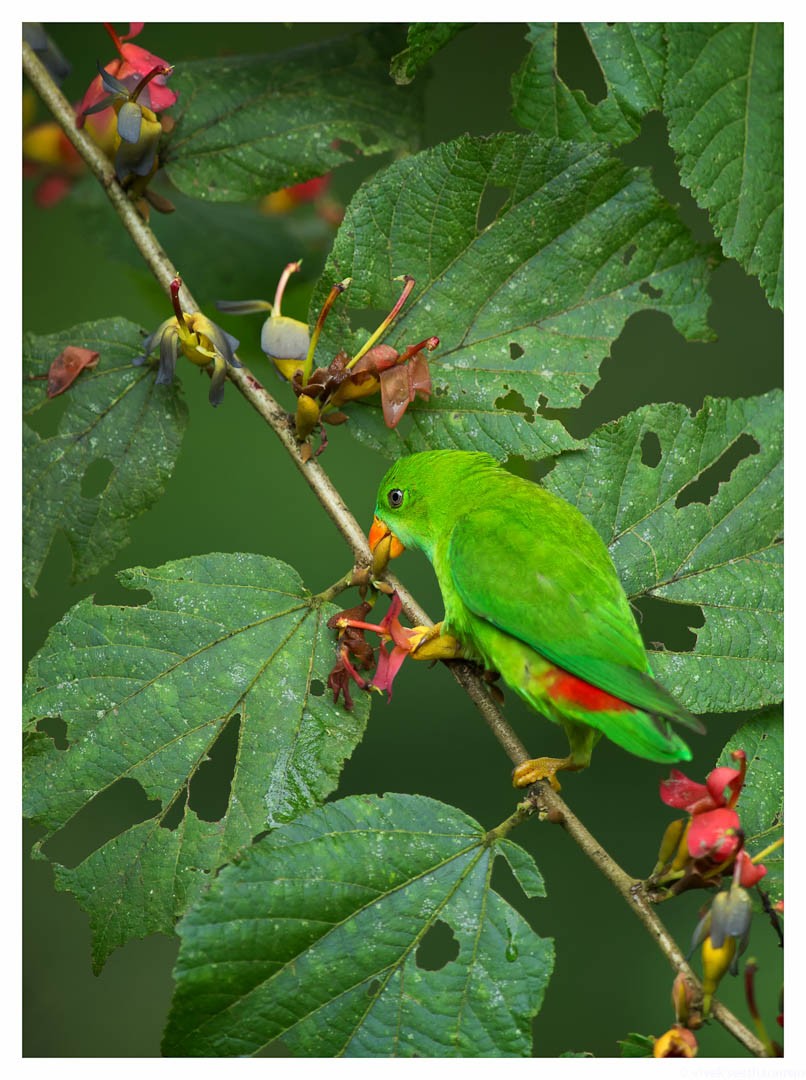Vernal Hanging Parrot
A species of Hanging Parrots Scientific name : Loriculus vernalis Genus : Hanging Parrots
Vernal Hanging Parrot, A species of Hanging Parrots
Botanical name: Loriculus vernalis
Genus: Hanging Parrots
Content
Description General Info
 Photo By viwake , used under CC-BY-SA-2.0 /Cropped and compressed from original
Photo By viwake , used under CC-BY-SA-2.0 /Cropped and compressed from original Description
The vernal hanging parrot (Loriculus vernalis) is a small parrot which is a resident breeder in the Indian subcontinent and some other areas of Southeast Asia. It undergoes local movements, driven mainly by the availability of the fruit, seeds, buds and blossoms that make up its diet. They frequent the banyan tree for the fruit and plantain trees for the nectar from the flowers. This is a small, mainly green hanging parrot, only 14 cm long with a short tail. The adult male has a red rump and bill, and blue throat patch. The female has a green patch. Vernal hanging parrot is a bird of dry jungle and cultivation. It nests in holes in trees, laying 2-4 white eggs. Immature birds have a duller rump, and lack the throat patch. Vernal hanging parrot is less gregarious than some of its relatives, and is usually in small groups outside the breeding season. Its flight is swift and direct, and the call is a raucous chattering. In Sri Lanka, it is replaced by the very similar endemic Sri Lanka hanging parrot, (L. beryllinus). 
Size
13 cm
Colors
Green
Yellow
Red
Cyan
Life Expectancy
10 years
Nest Placement
Cavity
Feeding Habits
Vernal Hanging Parrot's diet consists of fruit, seeds, buds, and blossoms, with a preference for banyan fruit and plantain nectar. Local movements are influenced by food availability, indicating a foraging behavior adaptive to resource distribution.
Habitat
Vernal Hanging Parrot thrives in a variety of forested environments, including evergreen forests, as well as moist and dry deciduous woodlands. They are often found in secondary growth forests, bamboo thickets, and near forest edges. Their habitat may extend to abandoned agricultural areas, dense tall scrub, and beach-strand woodlands, particularly those with mature casuarinas. Fruit gardens adjacent to forests and orchards also provide suitable living conditions. These birds occupy regions up to 1800 meters in elevation and are adaptive to both pristine and moderately disturbed habitats.
Dite type
Frugivorous
General Info
Feeding Habits
Bird food type

Fruit
Species Status
Not globally threatened.
Scientific Classification
Phylum
Chordates Class
Birds Order
Parrots Family
Parrots Genus
Hanging Parrots Species
Vernal Hanging Parrot